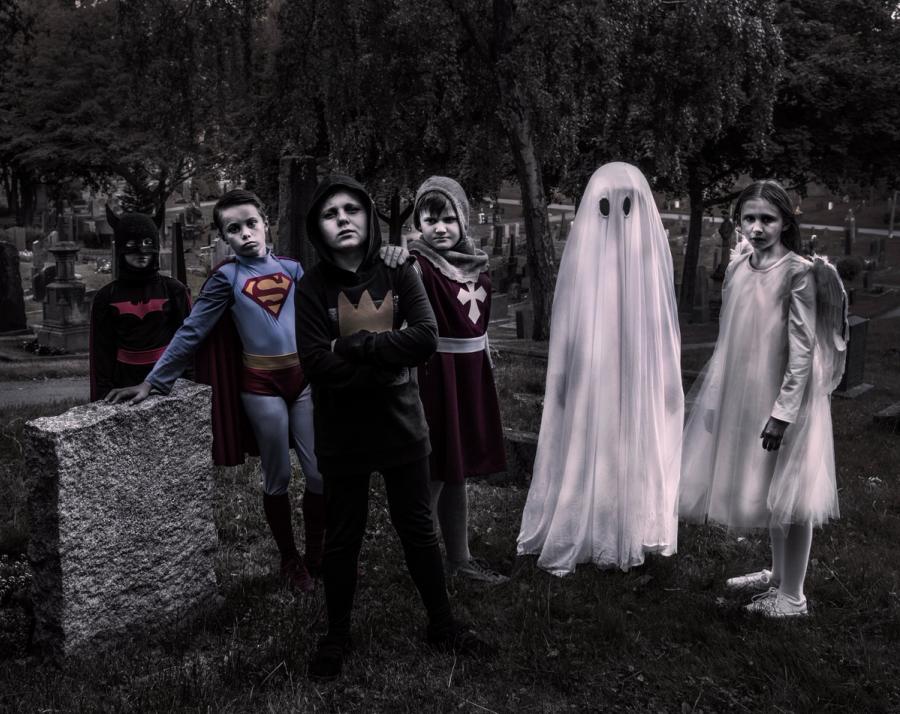It began with a joke. On the stage of the Norwegian National Opera in 2015, Alan Lucien Øyen and scenographer Åsmund Færavaag stood inside the monumental wooden set they had created for Timelapse. Øyen rapped his knuckles against one of the towering walls, nudged open a heavy door, and in mock reverence announced: “Mr. Grotowski.”Turning to artistic director Ingrid Lorentzen, he said half-seriously: “We should really stage a play in a set like this.”
Lorentzen, ever the yes-person, didn’t hesitate. “Which play?”
“Hamlet,” Øyen replied.
That offhand exchange became the seed of one of the Opera’s most ambitious productions — The Hamlet Complex.
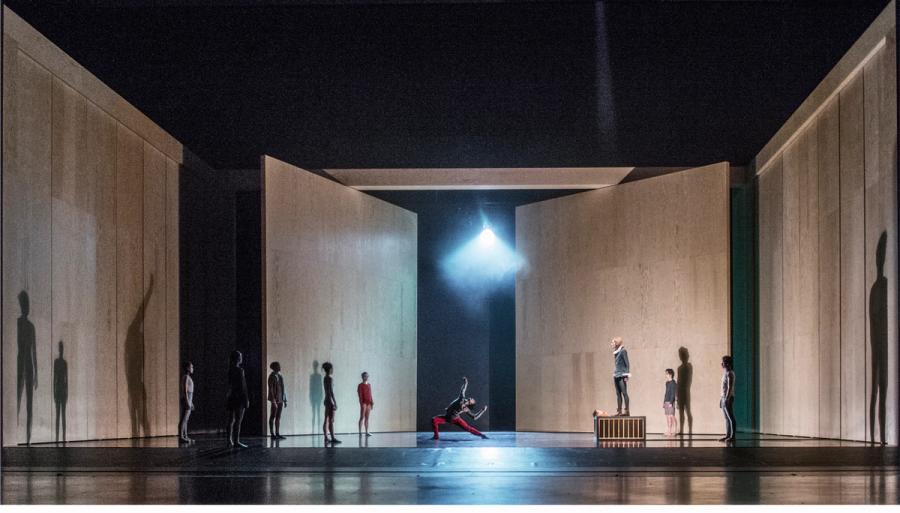
We should really stage a play in a set like this.
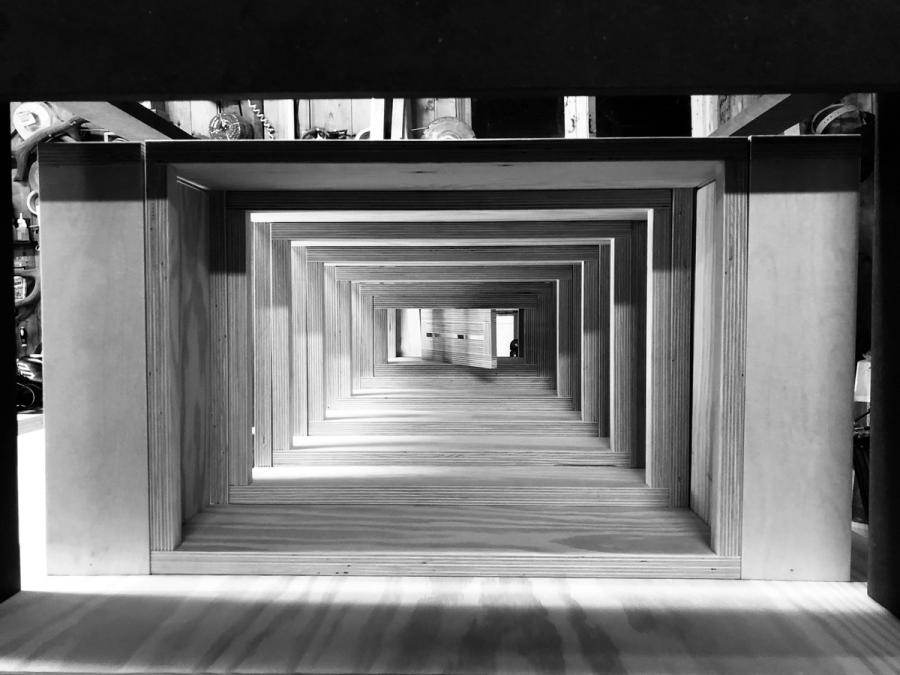

A head start in the Rockies
The idea gained traction a few years later when Øyen was invited to the Banff Centre in Canada for a month-long residency with young dancers. Officially it was an educational program, but he used the time to test-drive fragments of Hamlet.
“I knew the only way I could make it work with my schedule was if I started developing the Opera project in Banff,” he recalls. Together with playwright Andrew Wale, his sister Yvonne Øyen (later Gertrude), costume designer Stine Sjøgren, lighting designer Martin Flack, and sound designer Erik Innvær, he began building the vocabulary of a piece that would eventually erupt onto the Opera’s main stage.
By the time rehearsals began in Oslo, he already had scenes drafted, characters sketched, and movement language explored — a rare luxury in an institution where six weeks from first rehearsal to premiere is often all you get.
A stage that wouldn’t move
We didn’t know if it would actually work.
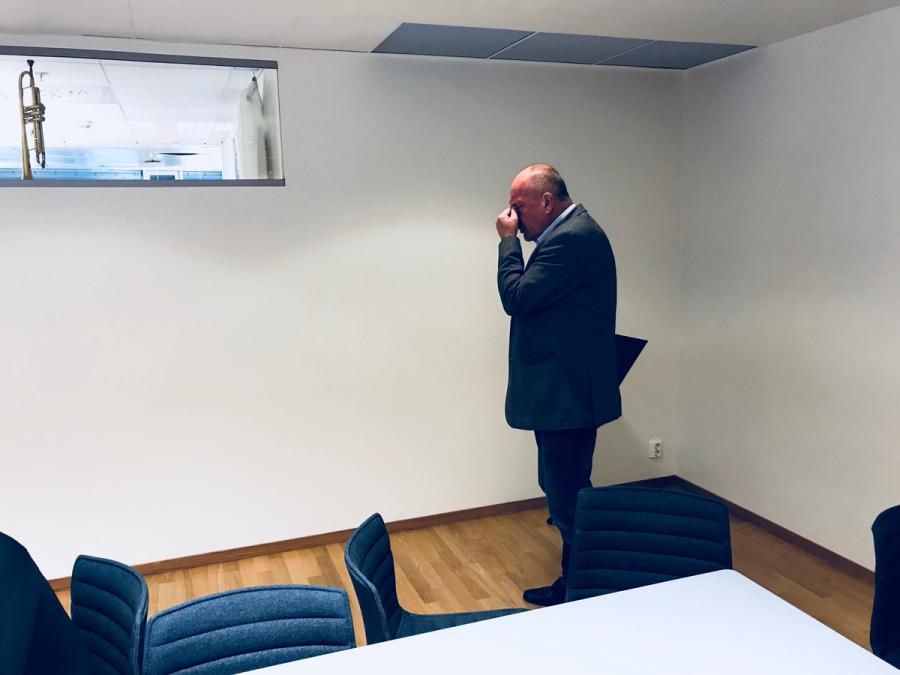
If The Hamlet Complex was a Gesamtkunstwerk, its most striking element was the set: a telescopic wooden structure designed by Færavaag. Inspired by a child’s toy, the mastodon construction could extend and collapse, swallowing and releasing the performers in a space that was itself constantly in flux.
There were doubts. At a production meeting the model jammed, refusing to move. “We took it as a terrible omen,” Øyen laughs. “We thought: if the model won’t move, the real stage will be a disaster.”
But head constructor Oddvar Nilsen solved it, and months later the vast structure rose from the Opera’s stage machinery like something alive. During the third performance, the sheer force of it broke a piece out of the floor — a reminder of the scale of what they had built.
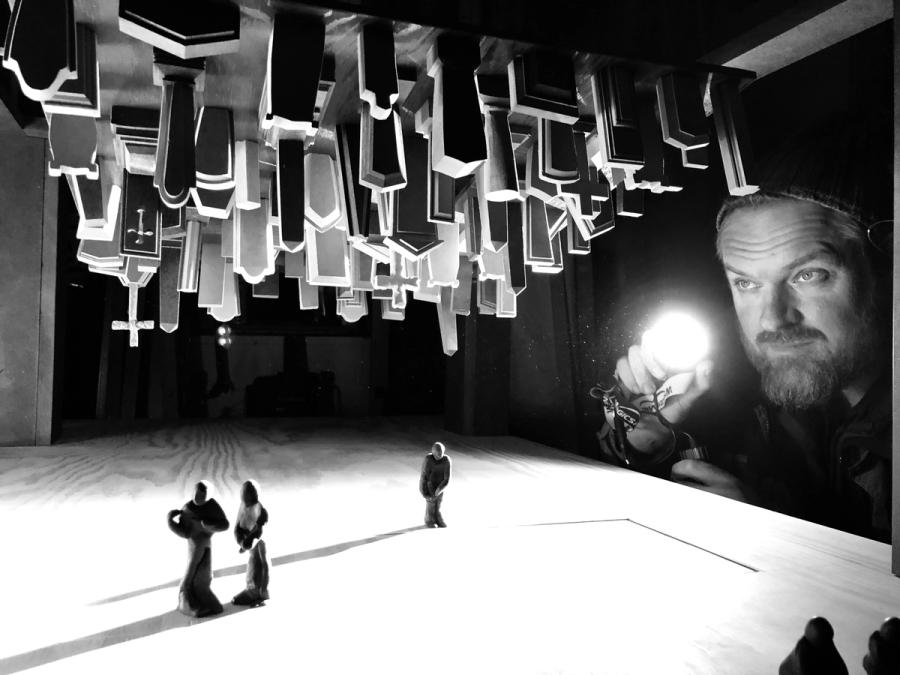
Children who were “professional”
If the set gave the piece its muscle, the children’s choir gave it its soul. The Opera’s young choristers became the Elizabethan boy players, staging their own miniature Hamlet in skeleton costumes and school uniforms.
“They were so precocious,” Øyen says. “I remember one nine-year-old looking at me in the makeup mirror and saying: ‘Well, you know, we’re professional.’ He was right — they were extraordinary. They even asked me what kind of English accent I wanted: British or American.”
Not all exchanges were so solemn. After an hour of rehearsal, one child approached him and asked in total seriousness: “Are you from Japan?”
